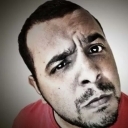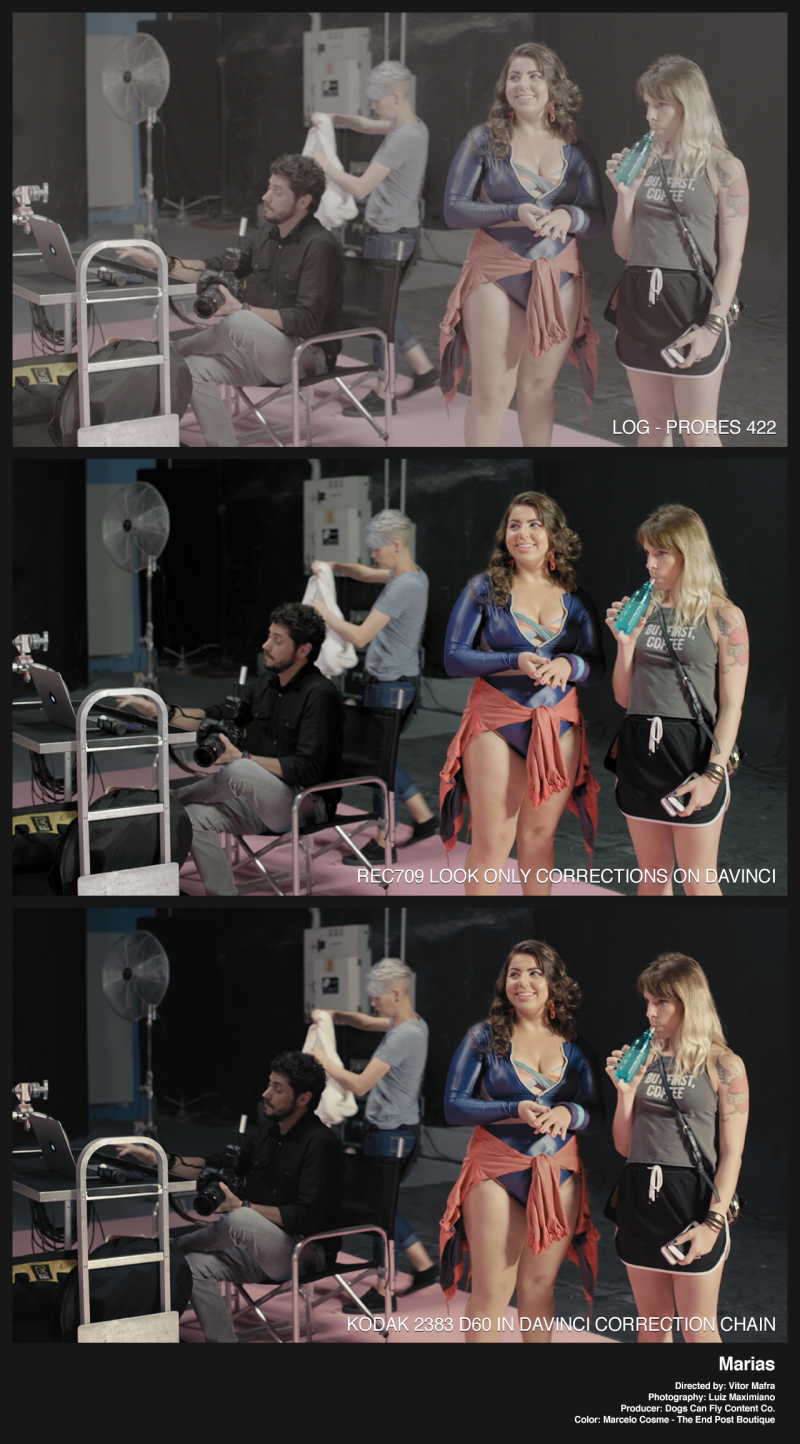-
Posts
54 -
Joined
-
Last visited
Content Type
Profiles
Case studies - Free
Case studies - Premium
Resources
Insider
Courses
Forums
Store
Everything posted by Marcelo Cosme
-

Questions and Rational Workflow
Marcelo Cosme replied to Marcelo Cosme's topic in Editing , Color grading & Finishing
Thanks Emily... I know it's a very personal matter. -

B/W Rgb values in film stocks
Marcelo Cosme replied to Abby Bader's topic in Editing , Color grading & Finishing
Hi Abby. I did not understand your numbering .. I use the Davinci in RGB mixer I have only -2 up to 2 ... -

Questions and Rational Workflow
Marcelo Cosme replied to Marcelo Cosme's topic in Editing , Color grading & Finishing
Thank you Abby. I have my workflow, and it works ... But I wonder if there is a common sense among colorists or if each follows their own instinct (laughs) ... Many colorists came from the days of the film, and of course there was a pattern of work. Today with so much tool, so many cams and so many codecs, there are a thousand ways of doing the same thing. -
Hello. I have some questions and would like your help. 1 - Do you frequently use Printer Lights? 2 - Do the classifications via LOG Wheels or PRIMARY Wheels? 3 - Do you use any base structure of nodes? Example: Node 1: NR, Node 2: Primary, Node 3: Saturation, etc ... 4 - Noise Reduction use at what stage of the process? I always use it as the first node, but I already got good results putting NR after the primaries ... I'm creating a workflow for a series that I start coloring now in June. At first I think of working in this format: Node 1: General Printer Lights (I have many scenes pulling into the green) Node 2: Log Wheel Expo (Blacks + Contrast + Pivot) Node 3: Log Wheel WB (Correction in Shadows, Mids, Highlights) "if necessary" Node 4 or more: Start Creative Look ... I know color correction has no recipe, but I would like to have a rational workflow to work with my assistants and other colorists remotely.
-

Time of color correction
Marcelo Cosme replied to Marcelo Cosme's topic in Editing , Color grading & Finishing
Many thanks to everyone for sharing information. And how good it is to have a channel like Lowepost, where at any moment a guy like @Mitch Paulson comes in and writes about Sicario and Deakins ... Thanks! -

ACES with F55 Raw
Marcelo Cosme replied to Marcelo Cosme's topic in Editing , Color grading & Finishing
Thanks Jussi. -
Good morning everyone! I have a material recordes up on Sony F55 RAW and we are using ACES by determination of the producer. But when done the IDT (Sony RAW) and ODT (Rec709) everything comes very contrasted and the blues always very saturated. Does anyone know the reasons for this or what to do? The web has a very limited material on this subject.
-

Time of color correction
Marcelo Cosme replied to Marcelo Cosme's topic in Editing , Color grading & Finishing
Thanks! -
Good idea man! How do you do those tests using grayscale ramp, can you explain?
-
Thanks Emily!
-
Hello I have a project recorded in Alexa Arriraw (12 bits) to grade in Davinci Resolve. What is the benefit or "sin" of using for example the 3D lut of Arri. Using lut did I lose quality of the material limiting the process of color correction? Another doubt if you use, I must use 3D output or 3D input.
-
Hi, Tom. I've always worked with tablets, so I feel more comfortable. And I have a better control over bezier masks for example ...
-
Hello. I'm having a problem using Davinci 14 and my Wacom Bamboo. From the moment I open the Davinci the cursor disappears, being possible to access the software only by the mouse. Someone like the same problem? I use Windows 10. Thank you.
-
My friend Ricardo Herling, Senior Colorist for a long time since before the digital, posted this question on Facebook. He posted jokingly, because he can no longer see the m31 look applied poorly. Many colorists, said not to use, others have posted NO LUTS boards ... BUT, reading the cases here at Lowepost, several colorists say they use luts. "The film was shot on the Alexa in Raw. We used an LUT to convert the C-Log into P3 color space, which also had a bit of a film emulation baked into it. Eric Whipp - Mad Max ". Cinderella was shot on 35mm Kodak film stock using anamorphic lenses. I graded using Blackmagic Resolve through a Kodak print emulation film stock and started by balancing the shots. Rob Pizzey - Cinderella ". Whenever this subject comes into play, it seems to be something forbidden, shameful ... I've heard from producers, "Marcelo, do not use any LUT because the director can see this as something unprofessional" ... Honestly, I use it when I need it, if I have a material recorded in Arri Alexa in Raw as Eric had in Mad Max, what's the problem of putting Lut from Arri to Rec709 or P3. If a Faded Look 60s is requested, what's the problem after creating the exposure, skin, light among other correction adjustments, apply a Lut Agfa Vista 400 Expired to visually assist my building of narrative, highlights, and more yellowish averages And slightly greenish shades ... (illustrative example). What is the problem of applying a Kodak 2383 FilmConvert with grain? I may be wrong, but I see the facilities and tools for a better job ... I am against the application without technical and artistic knowledge. I am against using Blockbuster packages, SuperMan look, Grand Hotel Budapest look, etc ... I did a test with a take recorded on A7s, see how the same material with the same rating, can get more organic with the CONSCIOUS use of a lut. See the difference mainly in the skin and shadows ... * In this series I did not use lut, but could have used ... It is my vision over this subject.
-
Thanks!
-
Hello Paul, thank you to take the initiative in developing solutions for our dear Davinci Resolve. I need some manual or a simpler explanation of how it works. Example: ResolveMathxtra.ofx I did not understand what I should do ... Could you explain me how to use it? Thank you!
-
What is the best player for viewing our color grading works? I have not yet found a reliable Windows platform player. In Davinci I always have a color and beautiful saturation, in the quicktime is VLC is always more washed.
-

Time of color correction
Marcelo Cosme replied to Marcelo Cosme's topic in Editing , Color grading & Finishing
Thank Tom and Sam for sharing information. -
In a blockbuster film or tv series what is the average time of color correction? Sometimes I think we run so much due to the term of the channels and producers here in Brazil. How do you work when you receive a material to create the look?
-
Talking to a customer the theme skin color appeared. As I had some free time yesterday I decided to do a test. I looked for some references and I came on this site: temptu.com/shade-finder#/intro I came to some conclusions even if a very basic test and without any obligation to perfection, it is something didactic. 1 - The independent color region of lighter skin tone or darker changes very little, what rules the scope is the luminance and saturation. 2 - Purposely I left the blond hair and green eyes, this way you can also notice that even in black skin tones, the biotype model predominates, and the color of light hair leave the skin with a brighter appearance.
-
Hello. I have a question that should be for some as well. We currently work with various camera types, codecs, and sensor sizes, all of which end up influencing the final file. What process do you have for matching between dji drones for example and cameras like Red, Arri BMCC and F55. I honestly am never happy with the result, it may be perfectionism but it can also be a failure in my work. Thank you!
-
Magnus, I did not get a chance to talk to the DoF. But if he tried to make this super dark look on the camera, he needs to check if he's in the right profession, he go for a wrong way.
-
Thanks Margus and Thomas! The problem with F55 in this job who I working is underexposure in electronic media, it's really complicated. The signal-to-noise ratio is sacrificed. When the aesthetic demands it, it is better to put the noise later. The bit depth does not matter much because the damage comes from the sensor, which when receiving low light sends the noise (sensors are analog devices correct!). I do not have much to do. I'm going to abuse Noise Reduction. That's my opinion after studying about the F55 and doing some testing. The ACES dont affect in this case, the problem is a record underexposure...
-
Hello, I would like to know what you think about using ACES? I recently started coloring a TV series and Post House decided to use ACES. But I have some doubts about the proper functioning and necessity of it for this project. My monitoring is 10 bits, the material is F55 Raw, but quite underexposed and grainy, I need to have time to do some testing with the ACES color space and the standard REC709.
-

Unfortunate Events (Netflix Serie)
Marcelo Cosme replied to Marcelo Cosme's topic in Editing , Color grading & Finishing
Thanks Tom Evans!- 2 replies
-
- unfortunate events
- netflix
-
(and 1 more)
Tagged with:


